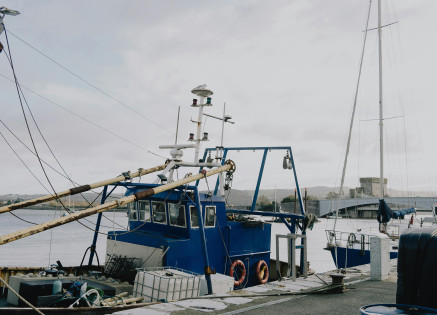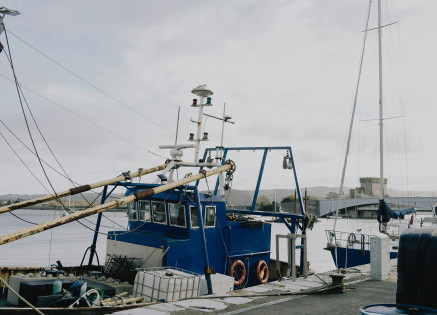Copyright © 2025 lmitac.com All Rights Reserved. Contact - Terms and Conditions - Privacy Policy - Quality Policy - Become an instructor - Vacancies - Sitemap
London Maritime Academy is a trade name for London Premier Groupversion: 2.9.0
London Maritime Academy is a trade name for London Premier Group

Posted on : 10/9/2024, 10:48:38 PM
The next time you stare out into the ocean, gasping at the size of it, and thinking how great the view is, you should remember that the sea is much more than its aesthetics, at the depths of the ocean lies one of the most valued requirements for development, Petroleum!
Enter the Mobile Offshore Drilling Unit, or MODU for short. This fascinating piece of engineering is projected onto the water, enabling drilling for hydrocarbons in deep water, all while withstanding some pretty serious environmental challenges.
So, what exactly is a MODU, and how does it do its job? Grab a cup of coffee, sit back, and let us give you an overview
A Mobile Offshore Drilling Unit (MODU) is essentially a floating platform constructed to drill exploratory wells for oil and gas beneath the seabed in deepwater. It's like a floating city, with living quarters, a drilling rig, and all the necessary equipment to extract resources from the ocean floor. But here’s the kicker: unlike fixed drilling rigs permanently anchored to the seabed, MODUs can move from one location to another. This flexible function allows operators to reach various potential drilling sites without being contained to a single spot.
There are several types of MODUs, each engineered for specific ocean conditions. Based on their design, the most common types in the marine market include:
Jackups are like giant operational cranes that can literally "jack up" their legs, allowing them to rest on the sea floor during drilling.
Each leg can be adjusted to various depths to adapt to an uneven seafloor. At the bottom of each leg is a spud can, a robust tank with a pointed tip that facilitates penetration into the seafloor.
Typically, the legs have a truss design, featuring large steel tubular columns (called chords) interconnected with smaller tubular pieces in a crisscross pattern. This combination creates a structure that is both strong and lightweight.
Picture a floating lounge chair anchored below the water surface for stability, that's semisubmersibles. This special type is suited for operating in deeper waters and rough environments.
Semi-submersible platforms can be configured in two ways to stay anchored over a drilling location:
The hull design of semi-subs makes them the most stable among floating Mobile Offshore Drilling Units (MODUs), allowing them to withstand rough weather and challenging site conditions, although they can be sensitive to changes in load.
As the term suggests, these are vessels equipped with drilling rigs. They're incredibly versatile and can operate in deep waters, often equipped with dynamic positioning systems to stay stable.

Now that we know what a Mobile Offshore Drilling Unit is, let’s break down how it operates. MODUs use advanced technology and techniques to maintain stability and safety while drilling.
This starts with a survey analysis, a study of possible risk-free construction site is conducted, and the drilling depth is estimated, then it’s ready for work
Once a site is chosen for exploration (and it's safe to be drilled), the MODU is transported to the location using tugboats or automated ships, or it might sail itself if it’s a drillship. Before drilling activities begin, the installed facilities need to be stabilised for the estimated drilling period through anchoring and ballast control.
After the MODU is securely located at its drilling site, the real work begins. Here’s a simple rundown:
When it comes to offshore drilling, safety is non-negotiable. Mobile Offshore Drilling Units (MODUs) are outfitted with a range of safety features to keep operations secure. Imagine blowout preventers ready to seal the wellbores during emergencies and robust communication systems that provide real-time monitoring, these units are built to handle harsh conditions. They undergo rigorous audits and are closely regulated to ensure they meet international safety standards, giving everyone involved peace of mind.
The role of MODUs in the oil and gas industry is crucial, it’s an integral part of all marine engineering courses in London
. These submersibles allow companies to tap into previously foreign unreachable subsea areas, facilitating the production and extraction of resources essential for global energy demands.
Yet, with this immense capability comes significant responsibility. Operations must not only focus on efficiency but also prioritise minimising environmental impact and adhering to strict safety regulations.
Despite the impressive technology behind Mobile Offshore Drilling Units, challenges abound. Factors such as weather conditions, ocean currents, and navigational hazards are capable of complicating the most straightforward drilling operation.
Additionally, there’s the constant possibility of environmental repercussions, like oil spills and habitat damage, which can never be predicted but should always be expected. It's even safe to say that all these hazards are increasing worldwide and will continue to grow at alarming rates.
Now you know what a Mobile Offshore Drilling Unit (MODU) is and how it works! From its origins as a floating platform to its vital role in the energy sector today, what do you think? Does the idea of a giant floating drilling machine surprise you?